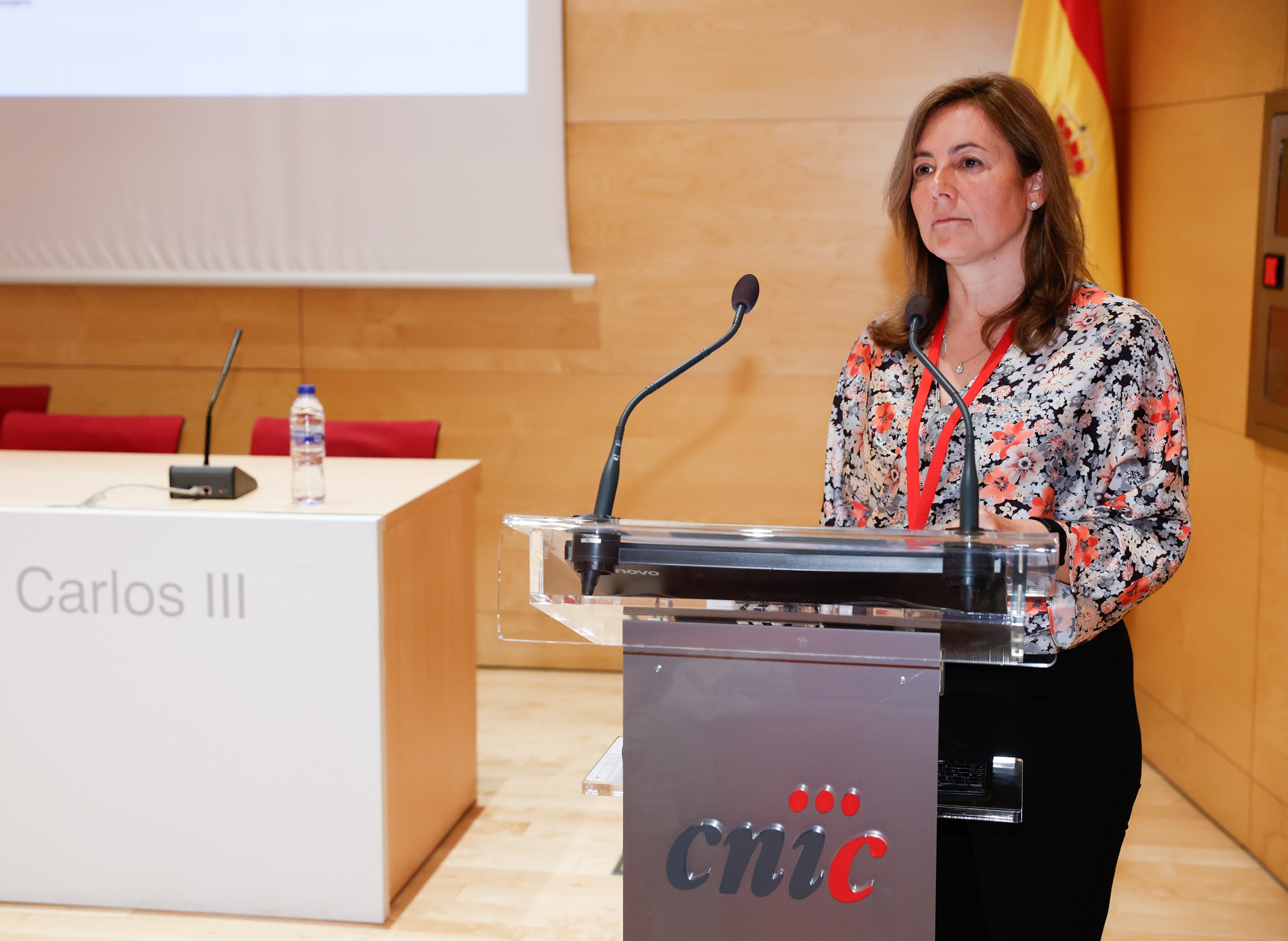Dra. Hélène Girouard: “In alzheimer’s disease, high blood pressure is the main risk factor after age”
Laboratory of Pharmacology and Physiology of the University of Montreal (Canadá)
Dr Dra. Hélène Girouard leads the Pharmacology and Physiology Laboratory at Montreal University (Canada). Her laboratory is interested in the mechanisms controlling cerebral circulation and the mechanisms underlying cerebral neurovascular coupling (NVC) in healthy, aged or diseased organisms. Although this area has been the subject of research for over 100 years, we still do not fully understand the mechanisms by which synaptic neuronal activity translates to blood vessel dilation. Fundamental research on NVC forms the foundations of modern neuroimaging and understanding it could explain the outcomes observed in neuroimaging, enabling the diagnosis of certain neurological diseases. These neurovascular functions can also worsen certain conditions such as ageing, Alzheimer’s, migraine, high blood pressure and strokes. Dra Girouard participated in the CNIC Conference 2024: Cardiovascular Risk Factors and Brain Health.
- What is your main area of research??
I have two main areas. One is the study of the impact of vascular dysfunctions in the brain. The other area is the mechanisms underlying neurovascular coupling. Neurovascular coupling is the connection between neuronal activity and the increase in blood flow in the same region, which ensures that active neurons receive enough oxygen and nutrients.
- What is the relationship between these two areas, neurological diseases such as Alzheimer’s or dementia and cardiovascular diseases?
Yes, because we are finding out more and more. Years ago, researchers, or rather, neuroscientists, thought that everything was down to neurological disorders. Before, it was thought that blood vessels were the origin of neurological diseases, but around the 1960s, our opinion changed and neurologists thought that blood vessels were not important, that everything was related to neurons. Now, we are coming back to the idea that both are important. We talk of the ‘neurovascular unit’, which includes blood vessels, glia and neurons. All of the components of this unit need to be healthy to keep the brain healthy. Whether the disease begins with a dysfunction of blood vessels or neuronal dysfunction, there is always an impact on both. This is important, particularly for Alzheimer’s disease, where high blood pressure is the main risk factor after age, which suggests that there is an important vascular element in the pathogenesis of Alzheimer’s.
- In some way, the way we see these diseases is changing, going back to the start, joining vascular factors with neurological ones.
When I began studying cerebral blood flow in the context of high blood pressure, I remember the first time I presented my work, a gerontologist told me, “I’ve seen many patients with cardiovascular diseases and many of my Alzheimer’s patients also have them. I’m pleased that someone is finally paying attention to that.” Because, with his clinical experience, he felt that there was something important in the relationship between the two. The epidemiological data linking, for instance, high blood pressure with the incidence of Alzheimer’s disease and cognitive decline is quite recent. It began in the 1970s, and only recently, many researchers, in both clinical and basic research have started to study this aspect in more depth, particularly for Alzheimer’s. But as well as Alzheimer’s disease there is a very important vascular element in cognitive deterioration that is not necessarily related with Alzheimer’s but is connected with vascular health and its impact on cognition.
- You mentioned high blood pressure as the most important factor for dementia after age, but whereas we cannot stop ageing, we can prevent, treat or control high blood pressure. The problem is that high blood pressure is on the increase in developing countries since it is related with obesity, diet and a sedentary lifestyle. It’s also a disease that doesn’t present symptoms, so many people don’t know they have it.
Exactly. As it doesn’t present symptoms, it is considered a risk factor rather than a disease. What we are seeing is an increase in blood pressure, but this is the consequence of many things: it could be genetic, mechanical or related with inflammation and the production of free radicals. There are many aspects involved in a rise in blood pressure, which makes it a complex topic. We think it is simple, just blood pressure, but really, the drugs administered to people only reduce blood pressure without necessarily tackling the root of the problem. If high blood pressure is an inflammatory disease, for instance, because now it is considered a subclinical inflammatory disease, then we should administer anti-inflammatory medication.
So, do you think that there are different types of high blood pressure and that each should be treated specifically?
Exacto, hay diferentes perfiles. No creo que solo reduciendo la presión arterial resolvamos el problema. Trabajamos en aspecto relacionado con la hipertensión, que es la rigidez de los vasos sanguíneos, un factor de riesgo para el alzhéimer y el deterioro Exactly, there are different profiles. I don’t believe that just by reducing blood pressure we will solve the problem. We are working on aspects related with high blood pressure, which is the stiffening of blood vessels, a risk factor for Alzheimer’s and cognitive decline. This is only one aspect of high blood pressure. There are people with hardened arteries who do not have high blood pressure but are still in danger of suffering brain damage. Another subject we study is the “early morning high” in blood pressure, because in the morning there is a significant increase in pressure, which could lead to stroke. We have also seen a relationship between this increase and a reduction in cerebral blood flow.
- Do current treatments for high blood pressure just treat the symptoms?
Yes, they treat blood pressure but don’t necessarily normalize other aspects, like vessel stiffness. There are drugs that could do that, like statins or osteoporosis medication, which help prevent calcification of the blood vessels. But we still don’t know from what level of stiffness we need to treat patients.
Are drugs being developed to treat these problems?
There are many drugs that already exist and many possibilities. With artificial intelligence and personalized imaging we can move forward in this field. The first step is to change lifestyle . But there are people who continue to suffer high blood pressure despite an exemplary lifestyle. Nevertheless, controlling blood pressure is always better than not doing anything.











